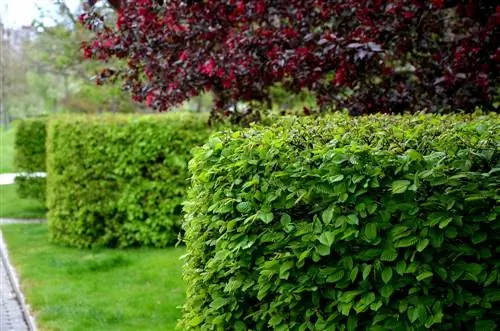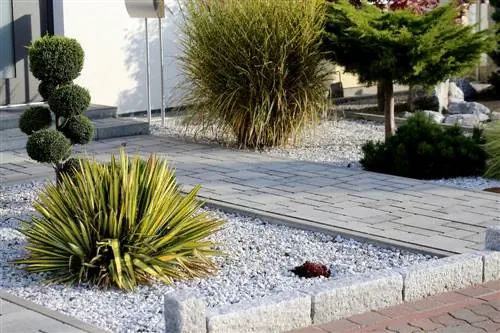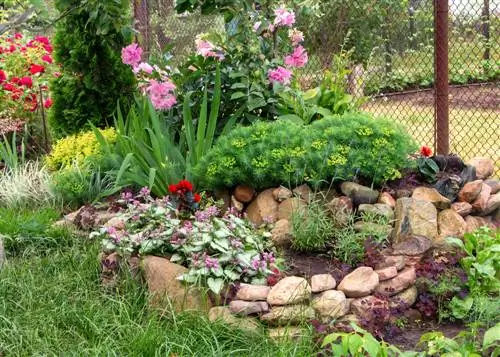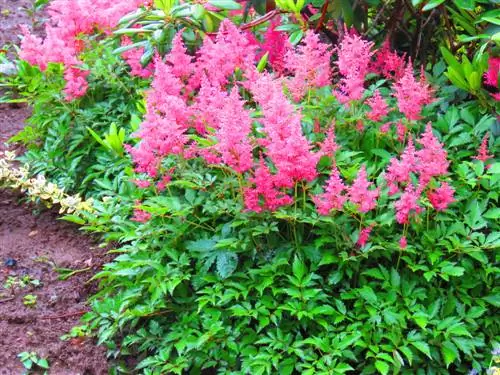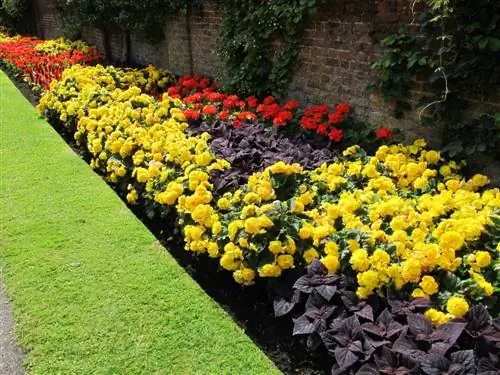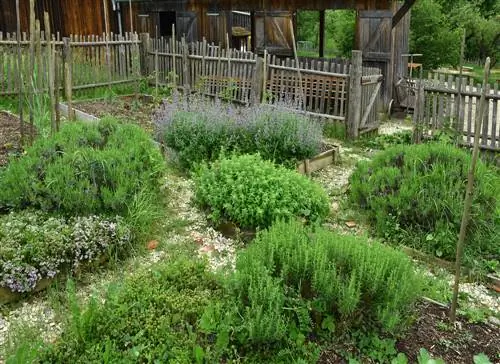- Author admin [email protected].
- Public 2023-12-16 16:46.
- Last modified 2025-01-23 11:22.
The hornbeam is known above all for its value as an opaque hedge. However, with her layered and at the same time attractive appearance, she quickly becomes miserable when left to her own devices. It is therefore advisable to find combination partners for the hornbeam.
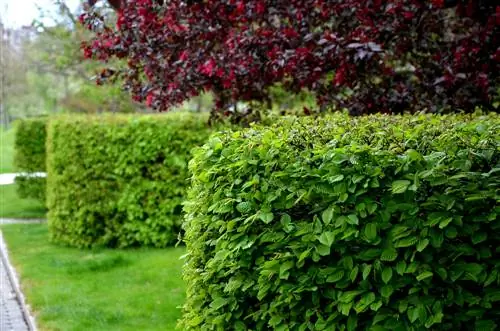
Which plants should I combine with a hornbeam?
To combine the hornbeam, you can use evergreen plants such as thuja, cherry laurel or privet, flowering shrubs such as forsythia or bladderwort and shade-tolerant perennials such as Caucasus forget-me-nots, hostas or bergenias to create an attractive look and variety of colors all year round.
What factors should you consider when combining hornbeam?
In order to combine the hornbeam in a visually beneficial way, you should consider the following factors in your planning:
- Foliage: medium green to golden yellow (in autumn), deciduous
- Flowering time: April to June
- Location requirements: sunny, deep and nutrient-rich soil
- Growth height: up to 20 m
As a deciduous tree, the hornbeam looks rather dreary from late autumn to spring. It is therefore ideal to combine them with evergreen plants and those with abundant flowers. Then the place where the hornbeam grows looks attractive all year round.
The hornbeam can develop best in a sunny location and on nutrient-rich soil. Your companion plants should be able to cope with similar conditions.
Note the height of the hornbeam. As a tall tree, but also as a shrub, it casts a lot of shade, which should be taken into account when choosing companion plants.
Combine hornbeam in the bed or in the bucket
The hornbeam fits perfectly into the background in the bed. It is your job to provide the right setting. All kinds of perennials can then be planted about half a meter away from the hornbeam. There they should still receive enough light to grow. If you are enthusiastic about bright accents, combine the hornbeam with perennials whose flowers are numerous and intensely colored.
Interesting combinations arise, for example, with the following plants:
- Caucasusforget-me-not
- fairy flowers
- Funkia
- Bergenia
- Snowdrops
- Winterlingen
Combine hornbeam with winter aconites
When the hornbeam still seems to be in deep hibernation, the winter aconites really come to life. They bring the sun to the base of the hornbeam and make the location shine. Plant several winter aconites in front of the hornbeam so that the expression is infallible.
Combine hornbeam with hostas
Funkas go well with the hornbeam because they contrast with its small, medium green foliage. Hostas in particular with strikingly designed leaves look stunningly beautiful in combination with the hornbeam. So ideally use blue-green, striped or variegated varieties for this combination. Remember that hostas grow smaller than hornbeams and should therefore take their place in front of the hornbeam.
Combine hornbeam in the hedge
It has proven useful to combine the hornbeam with trees orto combine typical hedge plants. For example, companion plants that have a different foliage color work wonderfully. At best, they are evergreen or provide a sea of flowers next to the hornbeam in spring. The following trees are well suited for a hedge combination with the hornbeam:
- Forsythia
- Cherry Laurel
- Thuja
- Privet
- Common beech
- Hawthorn
- Bubble Spiere
Combine hornbeam with thuja
The thuja provides variety in combination with the hornbeam. It has similar location requirements and, in contrast to the hornbeam, is constantly green. This combination is particularly decorative in autumn. Then the hornbeam turns golden yellow and shines next to the thuja.

